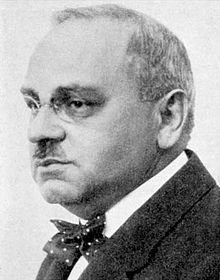Personality Course - Alfred Adler
ALFRED ADLER
_Austrian_psychiatrist.jpg)
source
Adler’s theoretical ideas are easier to test scientifically than those of Freud and Jung, and researchers have developed tests to measure style of life, early memories, and other elements of his theoretical constructs. His hypothesized relationship between birth order and personality has generated many empirical studies. The theory extends the comprehensiveness of psychoanalytic theory by including more conscious thought and future goals. It has been applied to school interventions for troubled youth and has generated an Adlerian version of psychotherapy.
Adler argued that people must be understood from a social perspective, not a biological one. He opposed Freud’s exclusive emphasis on sex as a source of energy, and he asserted that any approach that does not consider the individual’s goals is incomplete and cannot provide an effective therapy. His emphasis on growth and free will is an important counterforce to the deterministic attitude of Freud, and his emphasis on social interest and a holistic approach to personality is a historical precursor to the humanistic psychologists’ concept of self-actualization (Runyon, 1984).
BIOGRAPHY
Alfred Adler was born in a suburb of Vienna, Austria, in 1870, the second son in a family of four boys and two girls. His family was financially comfortable and one of the few Jewish families in his village. In protest against the isolation of orthodox Judaism, Alfred later converted to Christianity. As a child, Alfred was unhealthy and suffered from rickets. His earliest memory is as a 2-year-old, bandaged and barely moving, while his older brother moved freely about. His childhood, he said, was often made unhappy by the greater achievements of his older brother, with whom Alfred unsuccessfully competed. He was run over twice when he was 4 or 5. At the age of 5, Alfred heard a doctor tell his father that Alfred’s pneumonia was so serious that he would die; treatment was useless. His younger brother had died 2 years earlier. On the advice of a second physician, however, treatment was given, and Alfred recovered. He decided to become a doctor himself “in order to overcome death and the fear of death” (Ansbacher & Ansbacher, 1956, p. 199).
Adler married a Russian émigré, whose ideas were far more liberal than those typical in Austria at the time. She undoubtedly influenced Adler to deplore the restrictions of traditional attitudes toward women. For example, he reported one study he conducted that found that successful girls often had mothers with careers. Adler and his wife, Raissa, had four children.
Adler received his medical degree from Vienna University in 1895. He was interested in the contribution of psychological factors to illness and its cure, but he did not limit his practice to psychiatry until 1910, after his break with Freud. As a general practitioner, his lifelong concern with the social context of illness is exemplified by his pamphlet The Health of Tailors, in which he exposed the working conditions leading to high rates of disease in this occupational group. During World War I, Adler served as a physician in the Austrian army, treating war neuroses (later to be called shell shock).
Adler was impressed by Freud’s book on dreams and defended it against critics, although at the time he did not know Freud personally. In 1902 he joined Freud’s weekly discussion group, and he became Freud’s successor as president of the group in 1910 and coedited its journal. He took over many of Freud’s cases and was Freud’s personal physician.
In 1911, however, Freud broke with Adler, unable to reconcile Adler’s theoretical contributions with his own. Freud questioned Adler’s intellectual ability and accused Adler of failing to recognize the importance of the unconscious, thereby fundamen- tally missing the point of psychoanalysis. Adler, from his side, regarded Freud as a pampered child who had never overcome the self-indulgence of childhood and who clung to authority out of defensiveness.
Adler had many supporters. When he resigned the presidency of the Psychoanalytic Society, 9 of the 35 other members left with him. In 1912 he established the Society for Individual Psychology, and in 1914, he founded his own journal.
Adler developed interventions to resolve problems with children, including the prevention of delinquency and of psychological difficulties related to physical handicaps, poor parenting, and problems in getting along with other children (Ansbacher, 1992). He set up nearly 50 child-guidance clinics in Vienna and elsewhere in Europe. He did not emphasize punishment but instead encouraged children’s inherent creativity (Hoffman, 1997).
Adler wrote extensively, publishing over 300 articles and books (Dinkmeyer & Dinkmeyer, 1989). His reputation spread internationally. Like many Europeans during the politically troubled times prior to World War II, Adler moved to the United States in 1935. He taught at the Long Island College of Medicine. In 1937, at the age of 67, he died of cardiac problems, with little forewarning and after a healthy adulthood, while on a lecture tour in Scotland.
Adler acknowledged that his theory drew on his own life experiences. It is easy to see how a boy who was ill would aspire to become a physician and would describe the overcoming of physical defects as a major motivating force.
IN A NUTSHELL
- Adler emphasized conscious striving and the creative self, in contrast to Freud’s unconscious determinism.
- He described the fundamental motivation to strive from a felt minus to a felt plus.
- A person with an inferiority complex feels overcome by a lack of worth and ceases striving.
- In this striving toward a better condition, a person is guided by fictional finalism, the image of the goal.
- Adler viewed personality as a unity.
- A person’s unique style of life is evidenced by early memories.
- Although he thought of each person as unique, Adler listed types of mistaken styles of life: ruling type, getting type, and avoiding type of person.
- In contrast, a healthy style of life is socially useful.
- Parents contribute to unhealthy styles of life by pampering or neglecting their children.
- Adler’s theory has inspired training programs for parents.
- Family constellation, particularly birth order, influences personality development.
- Adler regarded the second-born position as the most desirable, although research does not generally confirm his prediction of higher achievement for this sibling position.
- Social interest is the key factor in psychological health.
- A healthy person succeeds in three tasks of life: work, love, and social interaction.
- Adler intervened in schools to deal with problem children.
- Adlerian therapy supports self-esteem and aims to change the style of life to a socially useful one.
- Adler described physical as well as psychological benefits of therapy.
Reference - Theories of Personality - Understanding Persons, Susan Cloninger, The Sage Colleges, 6th edition




